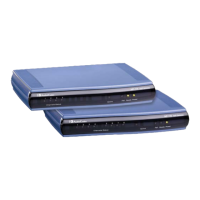Version 7.2 475 Mediant 1000B Gateway & E-SBC
User's Manual 23. Routing
23 Routing
This section describes the configuration of call routing rules.
23.1 Configuring Tel-to-IP Routing Rules
The Tel-to-IP Routing table lets you configure up to 180 Tel-to-IP routing rules. Tel-to-IP
routing rules are used to route calls from the Tel side to an IP destination.
Configuration of Tel-to-IP routing rules includes two areas:
Match: Defines the characteristics of the incoming Tel call (e.g., Trunk Group on
which the call is received). You can configure routing rules with one or more of the
following incoming Tel characteristics:
• Source Trunk Group (from where the call is received)
• Source (calling) and destination (called) telephone number prefix and suffix
Action: Defines the action that is done if the incoming call matches the characteristics
of the rule (i.e., routes the call to the specified IP destination). You can configure the
IP destination to one of the following:
• IP address or FQDN.
• E.164 Telephone Number Mapping (ENUM service).
• Lightweight Directory Access Protocol (LDAP). For more information, see LDAP-
based Management and SIP Services on page 229 and AD-based Routing for
Microsoft Skype for Business on page 250.
• IP Group. When an IP Group is selected, the device sends the call to the IP
address configured for the Proxy Set that is associated with the IP Group
(configured in ''Configuring IP Groups'' on page 333). The SRD associated with
the IP Group determines the:
♦ SIP Interface (SIP port and control network interface) - important when using
multiple SIP control VLANs
♦ Media Realm (port and network interface for media / RTP voice)
♦ SRD-related features on which the call is routed
If you configure the routing rule to send the call to any destination other than an IP
Group (e.g., an IP address), you need to select a SIP Interface for the call. If no SIP
Interface is selected, the device uses the SIP Interface associated with the default
SRD (Index 0). If you have deleted this SRD or SIP Interface, for whatever reason, the
device drops the call. The SIP Interface determines many attributes for the
destination:
• Device's logical SIP port and network interface through which the call signaling is
sent
• Device's logical RTP port and network interface through which the media is sent
(Media Realm)
• Other features that can be configured for the SIP Interface
• SRD. As one of the attributes of a SIP Interface is an SRD and as you can
configure multiple SIP Interfaces per SRD, the specific SIP Interface not only
determines the above-mentioned attributes, but also the SRD for routing the call.

